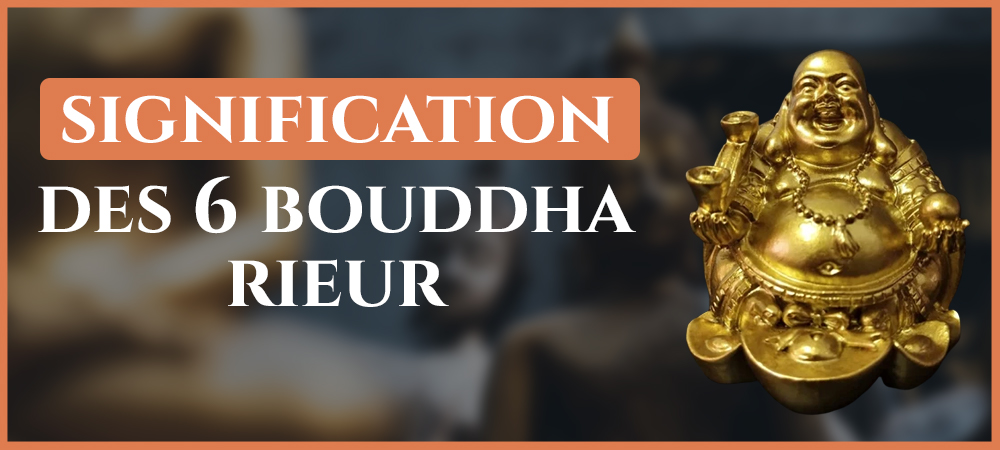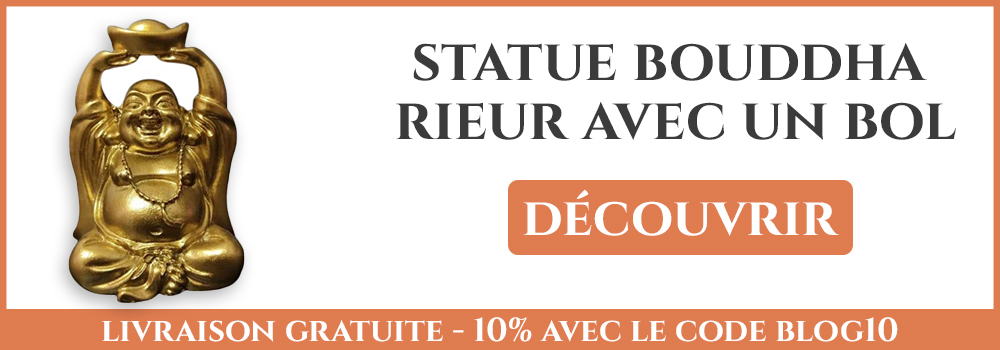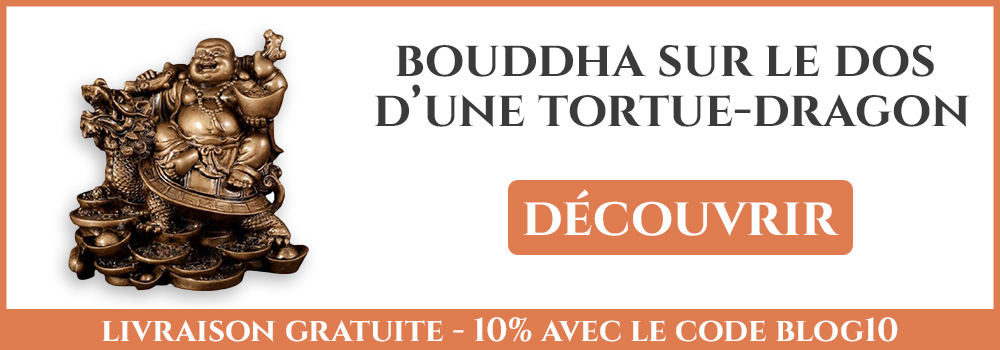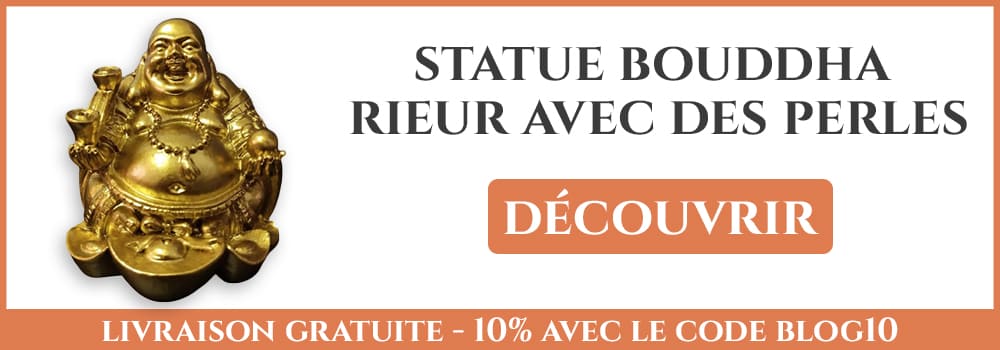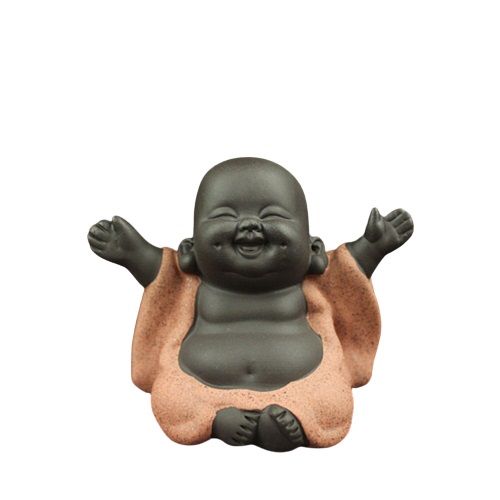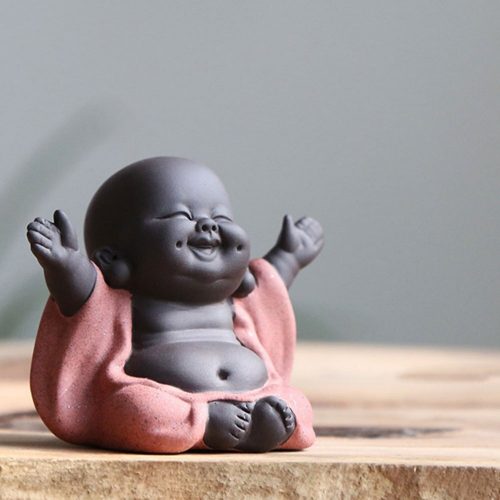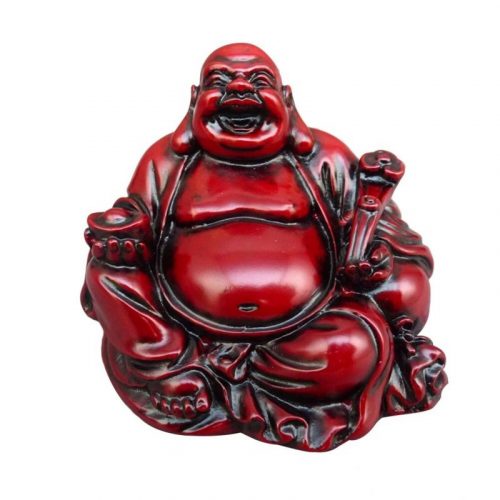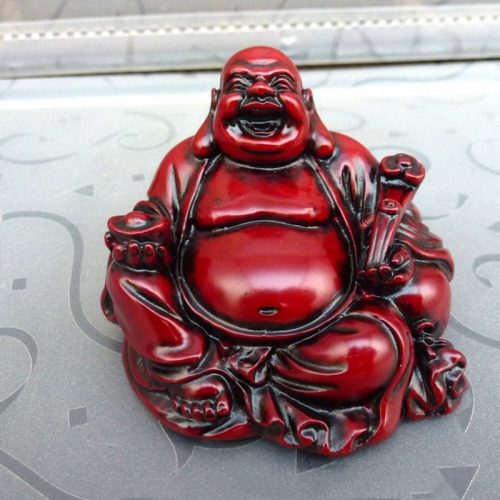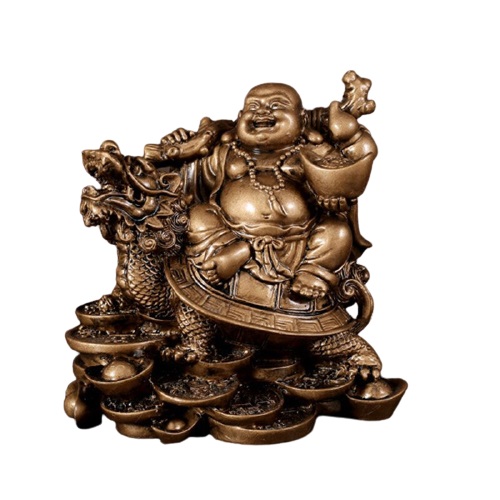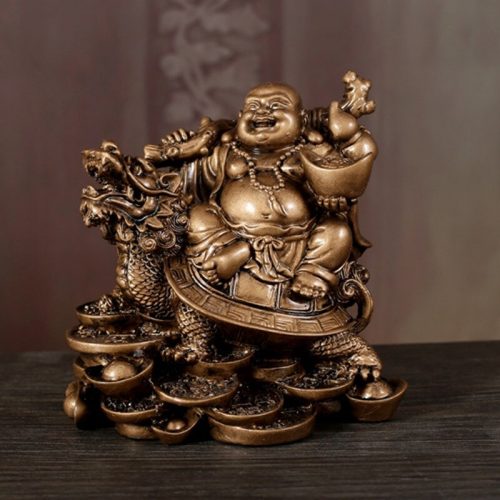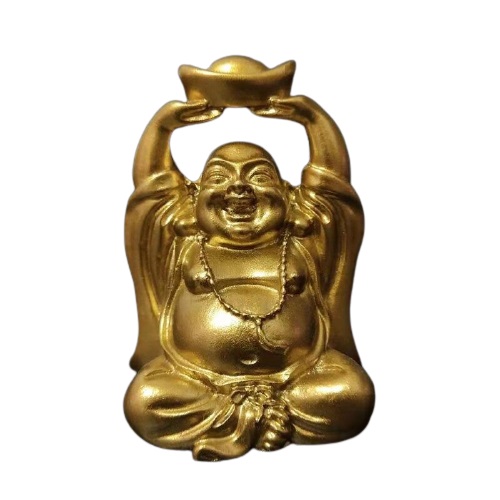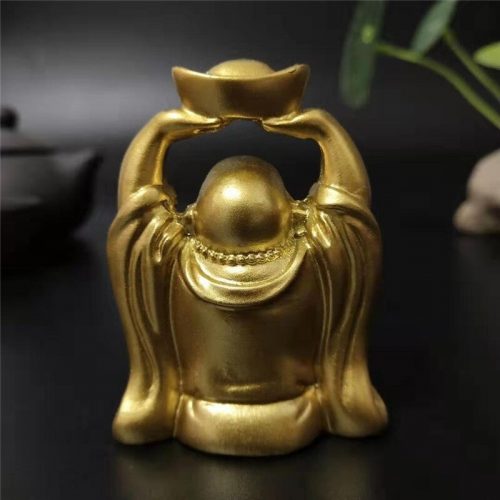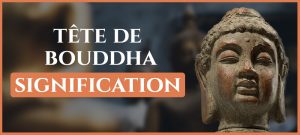You wonder what is the meaning of the 6 laughing Buddhas ? Then you are on the right page. I will present each of the existing positions to you and explain the symbolism behind it.
You will discover that no posture of the Laughing Buddha was chosen at random. Indeed, each symbolizes something specific and which has great importance in Buddhism.
So here we go, let’s see together what the meanings of the 6 Laughing Buddhas are.

Discover how to apply the fundamental principles of Buddhism to have a happier and more fulfilled life.
17,00€ FREE OF CHARGE
The meaning of the 6 laughing Buddhas
1. The Laughing Buddha with a bag
This representation of the Buddhist deity symbolizes the journey. The Laughing Buddha was a great traveler, he spread his good humor and his wealth throughout Asia. When he carries a bag, it means that he comes to collect people's misfortune in order to lock it in his bag.
As he goes from town to town, he removes sadness and negative emotions from everyone he meets.
Another meaning is that the bag symbolizes wealth and prosperity as it is filled with gold coins. So when the Laughing Buddha travels, he distributes his wealth to people in need.
2. The Laughing Buddha with a bowl
On many Laughing Buddha statues, we find this deity standing carrying a bowl above his head. This posture symbolizes joy and happiness because the Buddha is celebrating.
The bowl also symbolizes the life of a monk and therefore illustrates the renunciation of possessions of material goods. Indeed, Buddhism teaches that happiness is found within oneself and that possessions keep us away from it.
On some statues, the Laughing Buddha holds a bowl with a ball inside. This is the Wo Lu, an object that sucks up negative energies. By chasing away negative waves, this statue gives us a deep feeling of well-being.
3. The laughing Buddha on the back of a dragon turtle
The meaning of this Laughing Buddha is that it will bring you luck in your professional career. Indeed, by placing this statue in your living room, you will increase your ambition and your work abilities.
This way, you will improve your career and you can, for example, get a promotion or a new position with more responsibilities.
4. The meaning of the laughing Buddha with a fan
When the Laughing Buddha is depicted with a fan, this again symbolizes happiness, luck and prosperity. Each fan stroke chases away bad energies in order to bring you happiness on a daily basis.
By keeping misfortunes away, you can create a serene environment that promotes well-being in your home. These statues therefore have great meaning and are ideal if you want to purify a room in your home.
5. Meaning of Chinese Buddha with beads
The Chinese Buddha very often wears a necklace or a buddhist bracelet composed of Mala beads. These beads have been used since ancient times by Buddhist monks during religious rituals or during their meditation sessions.
The meaning of the laughing Buddha with pearls is therefore wisdom and serenity. It is therefore an ideal statue for meditation or yoga. Indeed, it will help you relax and clear your mind. This can help you achieve mindfulness.
By placing this statue in a room of your home, you will create a Zen atmosphere. You can therefore place it where you usually relax.
6. Budai with gold coins
When the Laughing Buddha is depicted with gold coins or other offerings, it symbolizes wealth and prosperity. Sometimes he also carries a bag on his back filled with positive vibes and luck.
If you want to improve your financial situation, you must place this statue in your home. It will bring you luck and help you increase your wealth.
We have seen that depending on the position of the Buddha, the meaning of the 6 laughing Buddhas can vary. But do you know what the main symbolism of this deity is? This is what we will see in this part of the article.
What does the Laughing Buddha symbolize?
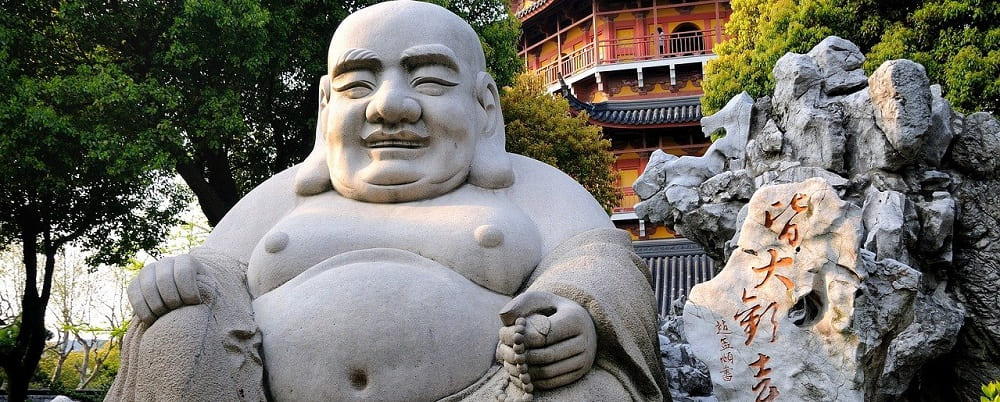
The Laughing Buddha, also known as Budai, Hotei or Chinese Buddha, is a representation of a Buddhist monk who lived more than 1000 years ago. He became very popular thanks to his kindness and joy of life.
The Laughing Buddha was a great traveler who spread his good humor across Asia. He was always very smiling and wore a wide open shirt revealing his big belly. Despite his overweight, he was always happy and had no complexes, which is why this Buddhist deity also symbolizes self-acceptance.

Discover how to apply the fundamental principles of Buddhism to have a happier and more fulfilled life.
17,00€ FREE OF CHARGE
Thanks to his cheerfulness, he was nicknamed Laughing Buddha or the Laughing Buddha. Over time, his popularity grew and he was increasingly respected. Today, we find its representation on many temples and other places of worship. The Laughing Buddha has become an iconic character in Buddhism and Hinduism.
The meaning of the Laughing Buddha is that it brings joy of life, happiness and wealth. This is why he is always represented with a big smile and signs of wealth (gold coins, offerings, necklaces and bracelets, etc.). Legend has it that rubbing your big belly will bring you luck.
In Feng Shui, the Hotei statue therefore has great meaning and is very recognized. It is used as an auspicious symbol and an omen of positive events in your life. The meaning of the 6 Laughing Buddhas is therefore quite similar, each time this statue symbolizes happiness or wealth.
Where to place your Laughing Buddha statue?
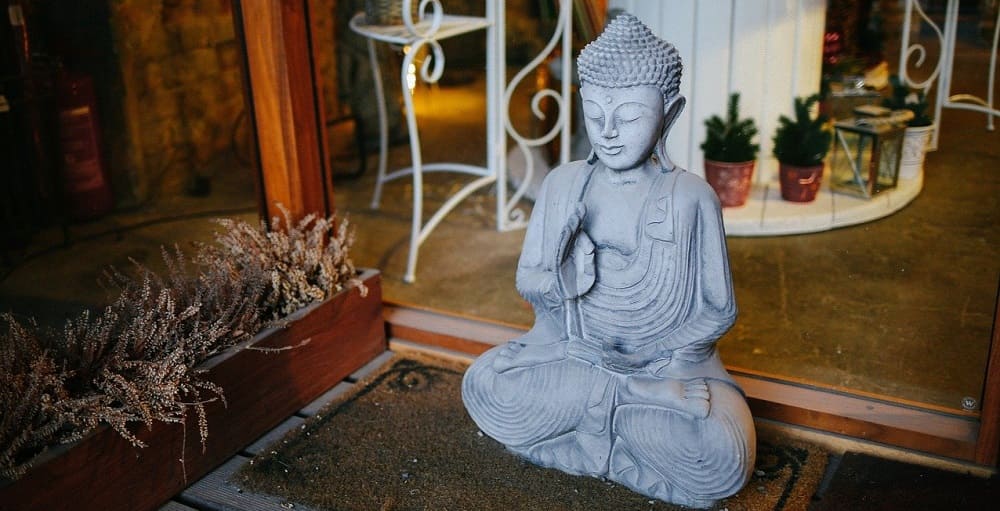
In the Feng Shui, we often find Laughing Buddha statues placed at the entrance to a room or home. This location was not chosen at random. Indeed, in Buddhist custom, we rub the belly of the Buddha so that he delivers us his luck and his wealth.
By placing the statue in an entrance, it is therefore easily accessible and everyone can easily rub the Budai's belly.
It is recommended to place your Buddha statue to the northeast if you want to create a zen atmosphere. You can therefore place it on a piece of furniture in your living room, your office, or even your library so that it releases its positive energies and brings you luck.
If you practice meditation or yoga in a particular room, you can place your statue there. You can also place incense, candles or any other Zen decorations. So, during your sessions, you will be able to fully relax.
Avoid placing your statue in rooms considered unclean (example: the bathroom or toilet). To respect the rules of Buddhism, you should also place it high up so that you can always look at it from below since it is a superior being.
We now come to the end of this article. I hope it has helped you understand the meaning of the 6 Laughing Buddhas. If you are interested in this Buddhist deity, you can discover the statues bearing his image on our online store.
Moreover, to thank you for reading this article to the end, we are giving you a exclusive promo code allowing you to benefit from 10% discount on the entire store: BLOG10.
If you liked this article, you can share it with those around you, or on your social networks, so that they know more about the meaning of the 6 Laughing Buddhas
-
Laughing Buddha Statue
- Footnotes 5.00 on 5
- 26,90 €
-
Laughing Buddha statuette
- Footnotes 5.00 on 5
- 18,90 €

